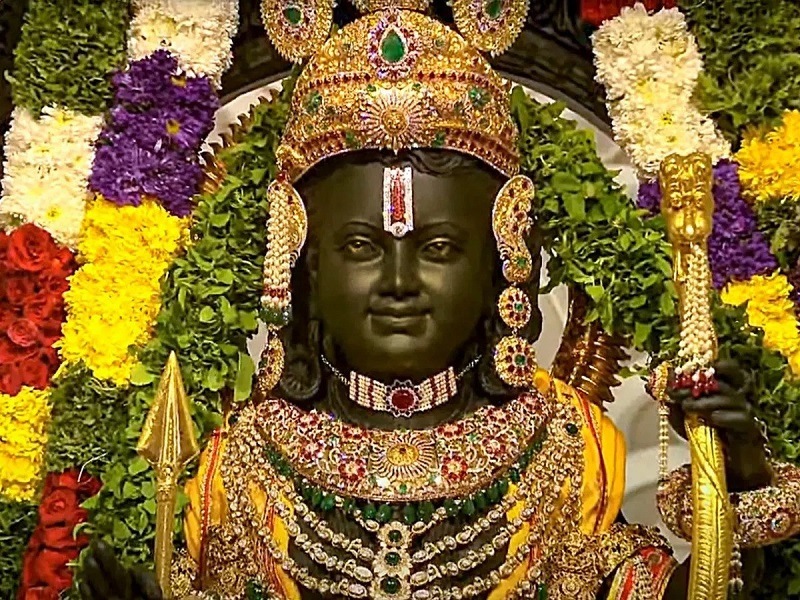The Ram Mandir is a Hindu temple under construction in the holy city of Ayodhya, Uttar Pradesh, India. It is regarded as one of the most sacred places of pilgrimage in India as it is believed to be the site of Ram Janmabhoomi, the birthplace of Rama, a principal deity of Hinduism. In a historic moment, Prime Minister Narendra Modi and other dignitaries inaugurated the Ram temple in Ayodhya on 22nd January 2024 at a grand ceremony. The Prana Pratishta, or consecration ceremony of Ram Lalla marked a significant milestone, ending a 500-year quest for a Ram Mandir in Ayodhya. Now that the consecration ceremony is done, here is a look at some interesting facts that you need to know about the Ram temple as part of the Ayodhya tour packages.
History
The present temple site is the former location of the Babri Masjid, which was built in the 16th century by the Mughal emperor Babur. However, members of the Hindu community also sought possession of the site, claiming it to be the birthplace of Lord Rama. The idols of Rama and Sita were placed in the mosque in 1949 before it was attacked and demolished in 1992. The 2.77 acres of the site subsequently became a disputed site and a long, legal battle ensued. On November 9, 2019, settling a fractious issue that went back more than a century, a five-judge bench headed by the then Chief Justice of India Ranjan Gogoi paved the way for construction of the temple and ruled that an alternative 5-acre plot would be given for a mosque according to a report from the Archaeological Survey of India (ASI) which suggests the presence of a structure beneath the demolished Babri Masjid, that was found to be non-Islamic.
Foundation Stone-laying Ceremony
After the Supreme Court verdict, Prime Minister Narendra Modi performed the Bhumi Poojan ceremony on 5th August 2020 and laid the foundation stone of the Ram Mandir, among the top places to visit in Ayodhya. The temple area covers nearly 2.7 acres of land while the entire Ram Mandir Complex would be spread over nearly 70 acres and will be equipped to host about a million devotees. The construction cost of the temple is likely to take between Rs 1,400 crore to Rs 1,800 crore. The Shri Ram Janmabhoomi Teerth Kshetra Trust is supervising the temple’s construction. While Larsen & Toubro are responsible for building the main structure, Tata Consultancy Engineers Ltd would develop the allied facilities.
Architecture of Ram Mandir
Sri Ram Mandir has been constructed in the traditional Nagar style. The temple in Ayodhya, one of the prominent pilgrimage places to visit near Lucknow, was designed by chief architect, Chandrakant Bhai Sompura, whose grandfather, Prabhakarji Sompura, had designed the Somnath Temple, along with his son, Ashish Sompura. It has a length (east-west) of 380 feet, a width of 250 feet, and a height of 161 feet. It is three-storied, with each floor being 20 feet tall. It has a total of 392 pillars and 44 doors. There are five Mandaps or halls. The entrance on the east would be built in the Gopuram style, which represents the temples of the south. The walls of the temple would display artworks depicting the life of Lord Ram. The sanctorum of the mandir would be octagonal-shaped while the structure perimeter would be circular. At the four corners of the compound, there are four temples – dedicated to the Sun god, goddess Bhagwati, Lord Ganesha, and Lord Shiva. The temple of Maa Annapurna is on the northern side, while a Hanuman temple is on the southern side.
Building Material
Interestingly, no iron is used anywhere in the construction of Ram Mandir in Ayodhya, among the must-include places in Uttar Pradesh tour packages. The foundation of the Ayodhya Ram temple has been constructed with a 14-meter-thick layer of roller-compacted concrete (RCC), giving it the appearance of artificial rock. A 21-foot-high plinth has been constructed using granite for protection against ground moisture. The core of the temple is built using pristine white Rajasthan Makrana marble. Karnataka’s Charmouthi sandstone has been used to carve out the exquisite idols of the deities. On the other hand, pink sandstone from Rajasthan’s Bansi Paharpur has been used for imposing figures on the entrance gate. The black stone used for Lord Ram’s idol originates from Karnataka.
Lord Rama’s Idol
The Ram Lalla idol consecrated at Ayodhya’s Ram Temple has been named ‘Balak Ram’ as it resembles the deity of a five-year-old boy. The 51-inch statue was crafted by sculptor Arun Yogiraj from Mysuru, among the prominent places to visit near Bangalore, Karnataka. The idol is hewn from a three-billion-year-old azure-coloured Krishna Shila (black schist) that was extracted from Gujjegowdanapura in Jayapura Hobli, HD Kote Taluk of Mysuru. This fine-to-medium-grained, sky-blue metamorphic rock, commonly known as soapstone due to its smooth surface texture, is ideal for sculptors in carving idols. The idol is adorned with Banarasi fabric, donning a yellow dhoti and a red ‘pataka’ or ‘angavastram.’ The actual idol found in 1949 has now been positioned before the newly consecrated idol. On every Ram Navami at noon, a system of mirrors and lenses will focus the sun’s rays on Ram Lalla’s idol in Ayodhya, among the best places to visit near Delhi. This unique anointment requires no electricity, utilizing brass instead of iron or steel.






















